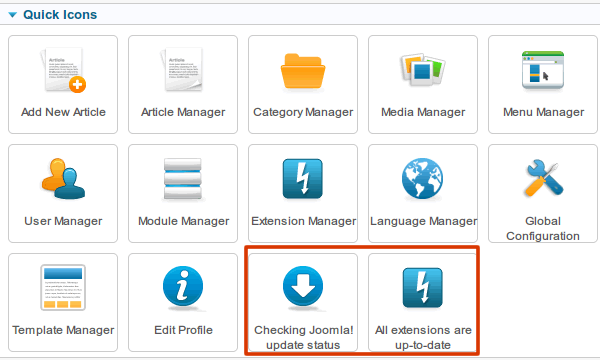| php-fpm request_terminate_timeout 设置 | 0 | 15 |
| php.ini max_execution_time 设置 | 30 | 30 |
| 执行结果 | php有Fatal error超时日志,http状态码为500 | php无Fatal error超时日志,http状态码为502,php-fpm日志中有杀掉子进程日志 |
好吧,结论是web请求php执行时间受到2方面控制,一个是php.ini的max_execution_time(要注意的是sleep,http请求等待响应的时间是不算的,这里算的是真正的执行时间),另一个是php-fpm request_terminate_timeout 设置,这个算的是请求开始n秒。
request_terminate_timeout引起的资源问题
request_terminate_timeout的值如果设置为0或者过长的时间,可能会引起file_get_contents的资源问题。
如果file_get_contents请求的远程资源如果反应过慢,file_get_contents就会一直卡在那里不会超时。我们知道php.ini 里面max_execution_time 可以设置 PHP 脚本的最大执行时间,但是,在 php-cgi(php-fpm) 中,该参数不会起效。
真正能够控制 PHP 脚本最大执行时间的是 php-fpm.conf 配置文件中的request_terminate_timeout参数。
request_terminate_timeout默认值为 0 秒,也就是说,PHP 脚本会一直执行下去。
这样,当所有的 php-cgi 进程都卡在 file_get_contents() 函数时,这台 Nginx+PHP 的 WebServer 已经无法再处理新的 PHP 请求了,
Nginx 将给用户返回“502 Bad Gateway”。修改该参数,设置一个 PHP 脚本最大执行时间是必要的,
但是,治标不治本。例如改成 30s,如果发生 file_get_contents() 获取网页内容较慢的情况,这就意味着 150 个 php-cgi 进程,每秒钟只能处理 5 个请求,WebServer 同样很难避免”502 Bad Gateway”。
解决办法是:request_terminate_timeout设置为10s或者一个合理的值,
或者给file_get_contents加一个超时参数。
$ctx = stream_context_create(array(
'http' => array(
'timeout' => 10 //设置一个超时时间,单位为秒
)
));
file_get_contents($str, 0, $ctx);
php-fpm中的request_terminate_timeout最好不要设置
刚转到php-fpm没几天就发现,进入我的joomla后台,firefox偶尔会给我白屏的那种http 503,这种情况仅出现在天翼云的服务器上,而我在国外的同样配置的服务器一点问题都没有,后来发现是request_terminate_timeout的问题。
每次登陆joomla后台,joomla都会去检查是否有更新(检查成功后cache,默认保存该cache 6小时),而且分为joomla主程序和joomla扩展两个部分,如下图:

不出意外的话,服务器会发起两个php进程,分别分配给两个php-fpm children,去连接joomla的官方update服务器。好,问题就来了,我的request_terminate_timeout = 30s,30秒不完成则超时,参见天翼云主机的国际出口相当蛋疼!没错,30秒内,天翼云主机根本无法完成连接joomla更新服务器并检查是否有更新这整个过程。这也很好解释了为什么同样配置的国外服务器就没有问题,因为它们完成上述更细过程仅需要在2~5秒左右。
我的apache超时设置是30秒,php.ini中最长执行时间野是30秒,多年来都没有任何问题,没有30秒还打不开的网页,所以我就没多想给php-fpm的request_terminate_timeout = 30s。经过这次的事情发现此30秒非鄙30秒啊……
php-fpm设置request_terminate_timeout后,php.ini中的max_execution_time和max_input_time都会失效,以php-fpm中的设置为准;
apache+mod_php在timeout后,只会在日志中记录一下,仅此而已。php-fpm中的request_terminate_timeout超时之后,日志中记录http 503的同时,最要命的,它还会直接杀死造成这个http 503的php-fpm child,并生成新的child。
在我的joomla更新这个实例中,就会有两个php-fpm children同时被杀死。而我的天翼云主机是低配,只有一个cpu核心,我也只启动了两个php-fpm children,两个同时死了,我的firefox这边也就http 503 Service Unavailable的白屏了。php-fpm的error_log如下:
[27-Sep-2014 10:41:06] WARNING: [pool www] child 1882, script '/home/onepx/public_html/administrator/index.php' (request: "POST /administrator/index.php") execution timed out (30.004534 sec), terminating
[27-Sep-2014 10:41:06] WARNING: [pool www] child 1882 exited on signal 15 (SIGTERM) after 164.717323 seconds from start
[27-Sep-2014 10:41:06] NOTICE: [pool www] child 1886 started
[27-Sep-2014 10:41:06] WARNING: [pool www] child 1883, script '/home/onepx/public_html/administrator/index.php' (request: "POST /administrator/index.php") execution timed out (30.005201 sec), terminating
[27-Sep-2014 10:41:06] WARNING: [pool www] child 1883 exited on signal 15 (SIGTERM) after 166.718162 seconds from start
[27-Sep-2014 10:41:06] NOTICE: [pool www] child 1887 started
像joomla这种全php的网站,每个连接都需要apache+php-fpm协同运作。即便php-fpm中的request_terminate_timeout时间设置很长,apache中的timeout时间设置略短,只要apache的timeout到了,php-fpm照样在后面杀进程……
如果网站的访问者比较多,php-fpm的child是被许多访问者共用的,杀一个child,就有可能导致几个用户同时http 503 Service Unavailable。所以,我的建议是——php-fpm中的request_terminate_timeout最好不要设置,只给apache一个timeout就够了。
 咨 询 客 服
咨 询 客 服